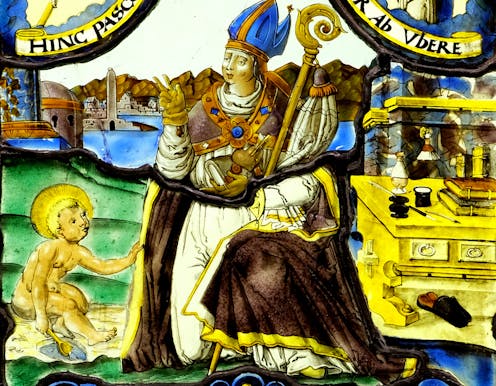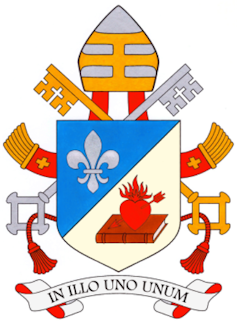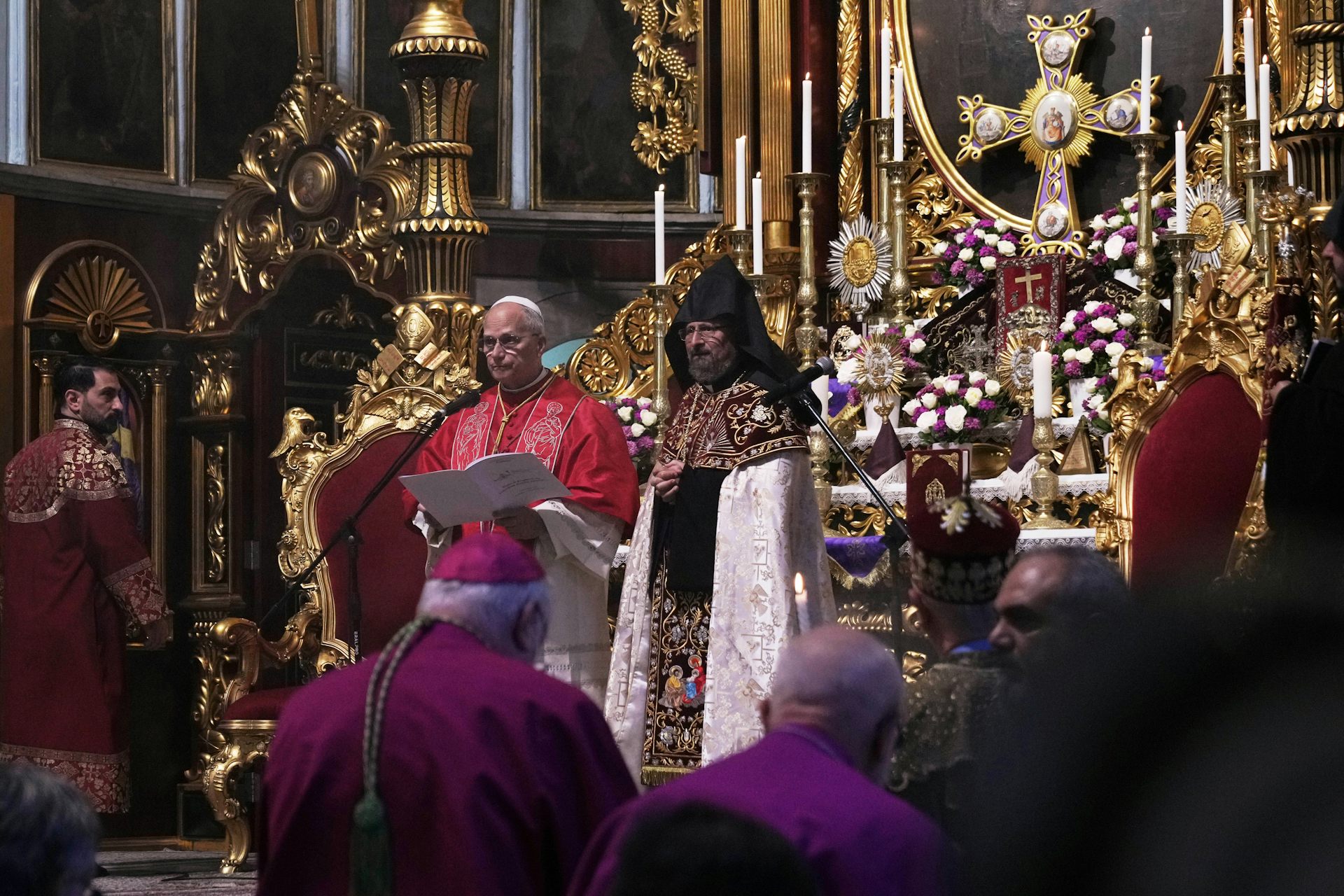What Pope Leo XIV’s coat of arms and motto reveal about his dedication to the ideals of St. Augustin
In choosing his motto and coat of arms, Leo references the Order of St. Augustine, to which he belongs. He uses the identifying symbol of Augustine, a heart pierced by an arrow.

Pope Leo XIV has announced his motto and coat of arms – a long-held tradition for those in the ranks of bishops, cardinals and popes. The choice of symbols and words reflects the person’s experience.
Leo’s shield is divided diagonally: The upper half shows a white lily on a blue background, and the lower shows the emblem of the Order of St. Augustine – an order to which he belongs. His motto reads, “In Illo uno unam,” translated as “In the One, we are one,” which are words of St. Augustine from his Exposition on Psalm 127, Paragraph 2: “I understand one in the One Christ. You are therefore many, and you are one; we are many, and we are one. ”
In choosing this motto, Leo includes the identifying symbol of Augustine, a heart pierced by an arrow.

As an art historian, I explain how Renaissance artists portrayed Augustine’s humility – and what the choice of the motto might tell us about the new pope. .
The Order of St. Augustine
Augustine lived in the late fourth century, ultimately serving as bishop of Hippo in northern Africa for 34 years. The Augustinian order was founded in 1244 after several communities of hermits living in the region of Tuscany, Italy, petitioned Pope Innocent IV to form a single order. The pope gave them the Rule of Saint Augustine as a code of living, which stated: “Call nothing your own, but let everything be yours in common; [do] not seek after what is vain and earthly.”
Augustine’s status as a scholar, theologian and administrator made him a widely depicted saint. For example, he appears in a stained glass window commissioned by a pastor in 1622, in which he holds his symbol of the heart pierced with the arrow resting on a book on his lap.
The image relates to a phrase from Augustine’s book “The Confessions”: “Thou hadst pierced our heart with thy love, and we carried thy words, as it were, thrust through our vitals.”
In this stained-glass image, the saint is seen speaking to a child. The 1483 translation of the “Golden Legend,” a collection of saints’ lives, explains that while struggling to write his treatise “On the Trinity,” Augustine was walking at the seashore and saw a child filling a tiny pit with water.
When the child explained that he was bringing the ocean into the pit, Augustine scolded him for being silly. The child answered that he would sooner fit all the water of the sea into the pit than Augustine could bring the mystery of the Trinity into his limited human understanding. The Trinity is the Christian concept that God is not a single person but three – Father, Son and Holy Spirit – united in a single divine and eternal nature.
This lesson in humility became widely depicted across the centuries. In 1482, an altarpiece by the painter and sculptor Michael Pacher shows Augustine with a child at his feet holding a spoon.
Augustine’s scholarship
Augustine’s legacy includes not only “The Confessions,” one of the most widely read books of medieval and early modern times, and “On the Trinity,” but many others, including “The City of God,” a monumental work of over 1,000 pages.

Sandro Botticelli’s 1480 painting of Augustine in his study shows the saint searching for clarity of thought as he pauses his writing.
Dressed simply in a long white garment and a cloak, he has set aside his bishop’s miter, an official hat – also a gesture of humility. His study is crowded with books; on the right, behind his head, a book is open to a study of geometry.
Botticelli tries to show the saint as a scholar in ancient times by placing on the left an old and discredited celestial model that depicts the Earth at the center of the universe, with the Sun, Moon, planets and stars revolving around it. We, with modern knowledge, understand that despite his intelligence, Augustine cannot know everything.
Leo has been both a scholar and pastor. He served as a professor of canon law and early Christian theology at San Carlos y San Marcelo, a seminary in Peru.
Yet, like the founder of his order, his words at this first Mass reflected his humility when he said that his appointment as pope was “both a cross and a blessing” and spoke of the responsibility he and the cardinals have in the world.
Virginia Raguin does not work for, consult, own shares in or receive funding from any company or organization that would benefit from this article, and has disclosed no relevant affiliations beyond their academic appointment.
Read These Next
AI-generated political videos are more about memes and money than persuading and deceiving
Don’t discount the threat of AI political videos fooling people, but for now, they’re mostly about…
Newly discovered link between traumatic brain injury in children and epigenetic changes could help p
Some children recover better after traumatic brain injury than others, despite appearing similarly to…
How crime in Brazil drags down the economy and heaps economic pain on the nation’s poor
The percentage hit on Brazil’s GDP could be in the double digits.





